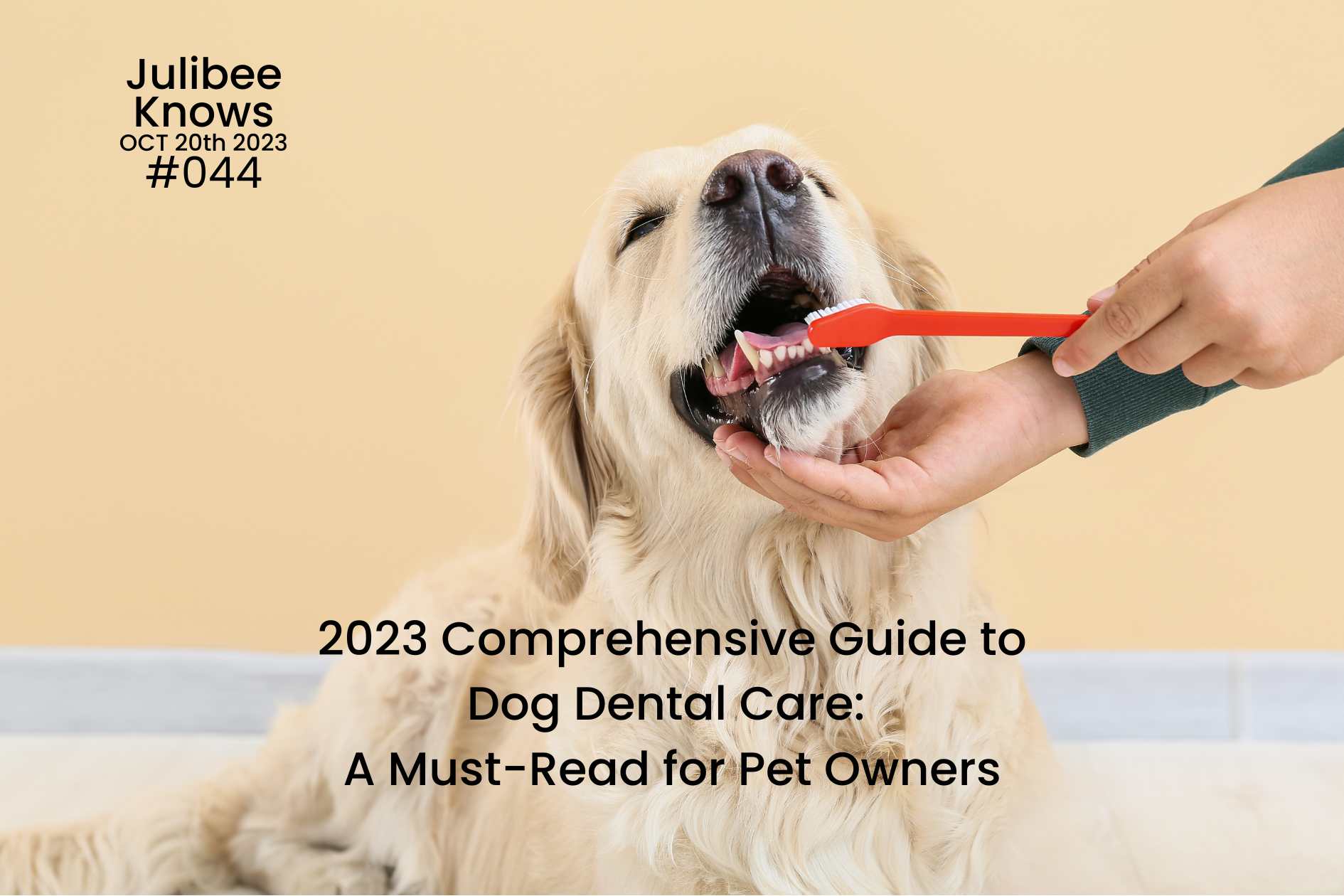
2023 Comprehensive Guide to Dog Dental Care: A Must-Read for Pet Owners
Discover the latest insights into dog dental care. From understanding teeth structure to the importance of regular check-ups and cleaning, this guide is essential for pet parents. Keep your furry friend's smile healthy and bright.
Chapter 1: The Structure of Dog Teeth
A dog's teeth can be divided into three main parts: enamel, dentin, and pulp. Enamel is the toughest part of a dog's body, but it can still be damaged by strong biting and impact. When enamel is compromised, and dentin is exposed, bacteria can enter through tiny tubules and infect the pulp, leading to tooth decay.
Common dental issues in dogs include periodontal disease (gum inflammation and periodontitis), tooth wear, crown fractures, misalignment, oral tumors, and in rare cases, problems like tooth resorption and cavities. Severe dental problems can lead to complications like oral-nasal fistulas, facial abscesses, and even systemic infections.
The treatment of dental issues in dogs is somewhat similar to humans. Teeth without pulp exposure can be repaired using resin. However, if the pulp is exposed, prompt treatment is essential. For recent fractures, conservative vital pulp therapy can be considered to save the tooth's vitality. If the pulp has been exposed for more than two days, root canal treatment is necessary. In severe cases, extraction may be the only option. The choice of treatment should depend on factors like the dog's current dental condition, treatment risks, and the owner's ability to provide post-treatment care.
Understanding the structure of a dog's teeth is crucial for identifying and addressing dental issues. Dental care significantly impacts a dog's overall health and well-being.

Chapter 2: Dental Problems in Dogs
In most cases, oral discomfort, infection, or inflammation may not be evident in a dog's daily behavior. Early-stage periodontal disease often starts as gum inflammation due to bacterial plaque, which can be reversed by cleaning the gums thoroughly.
In more severe cases, bacterial plaque mineralizes with saliva to form tartar. Over time, this bacterial biofilm can invade the gingival sulcus between the gums and teeth, leading to periodontitis and eventually irreversible tooth loss. In severe scenarios, oral bacteria can enter the bloodstream through fractured teeth, causing systemic infections that pose a risk to the dog's life.
To avoid missing the ideal treatment window, it's crucial to schedule Complete Oral Health Assessment and Treatment (COHAT) regularly. Oral health is now recognized as fundamental to a pet's overall health and happiness, making daily oral checks and cleaning indispensable.
For dogs that have never experienced tooth brushing, you can start by introducing toothpaste with flavors they enjoy. Begin by allowing them to lick it off your finger and gradually progress to more comprehensive oral cleaning. Use finger brushes or dental cleaning tools that are sensitive, controllable, and easier for dogs to accept.
Once your dog is accustomed to daily oral care, you can transition to using special pet toothbrushes and focus on cleaning interdental spaces and fissures. Odorless toothpaste may reduce saliva production, enhancing the cleaning effect.
Dogs severely affected by tartar buildup who refuse tooth brushing should seek professional help from qualified veterinary dental hospitals. Comprehensive dental cleaning should involve preoperative evaluation, anesthesia, dental examination, cleaning, and, when necessary, further treatments or extractions for exposed teeth.
Regular dental care is critical for dogs. Dental problems can often go unnoticed but have a significant impact on their health. Establishing oral hygiene routines and seeking professional dental care when needed can significantly improve a dog's well-being.
Chapter 3: Dental Tools and Products
Selecting the right dental tools and products is essential for maintaining your dog's oral health. Specialized toothbrushes designed for dogs are more effective in reaching interdental spaces and fissures. These brushes are controllable and gentle on a dog's teeth and gums.
For toothpaste, it's advisable to begin with flavors that your dog finds appealing. Over time, you can transition to odorless toothpaste for more effective cleaning. To tackle tartar and plaque, there are dental chews and toys designed to promote oral health. These products can be a valuable addition to your dog's daily dental care routine.
The choice of dental tools and products plays a significant role in the effectiveness of oral care for dogs. Gradual acclimatization to toothpaste flavors and using appropriate tools can make the process more comfortable for both pet and owner.
Chapter 4: Conclusion - The Sign of a Good Dental Vet
When seeking dental care for your dog, it's important to choose a qualified veterinary dental hospital. A thorough dental cleaning process should include surface cleaning to remove plaque and tartar, probing the periodontal pockets, subgingival scaling to clean below the gumline, and polishing.
These steps are essential for maintaining oral health. Ensuring your chosen hospital follows these standards is vital for your dog's well-being.
The quality of dental care provided by a hospital is a significant factor in your dog's oral health. Knowing the essential steps in dental cleaning allows you to make an informed decision when choosing a dental hospital for your pet.

